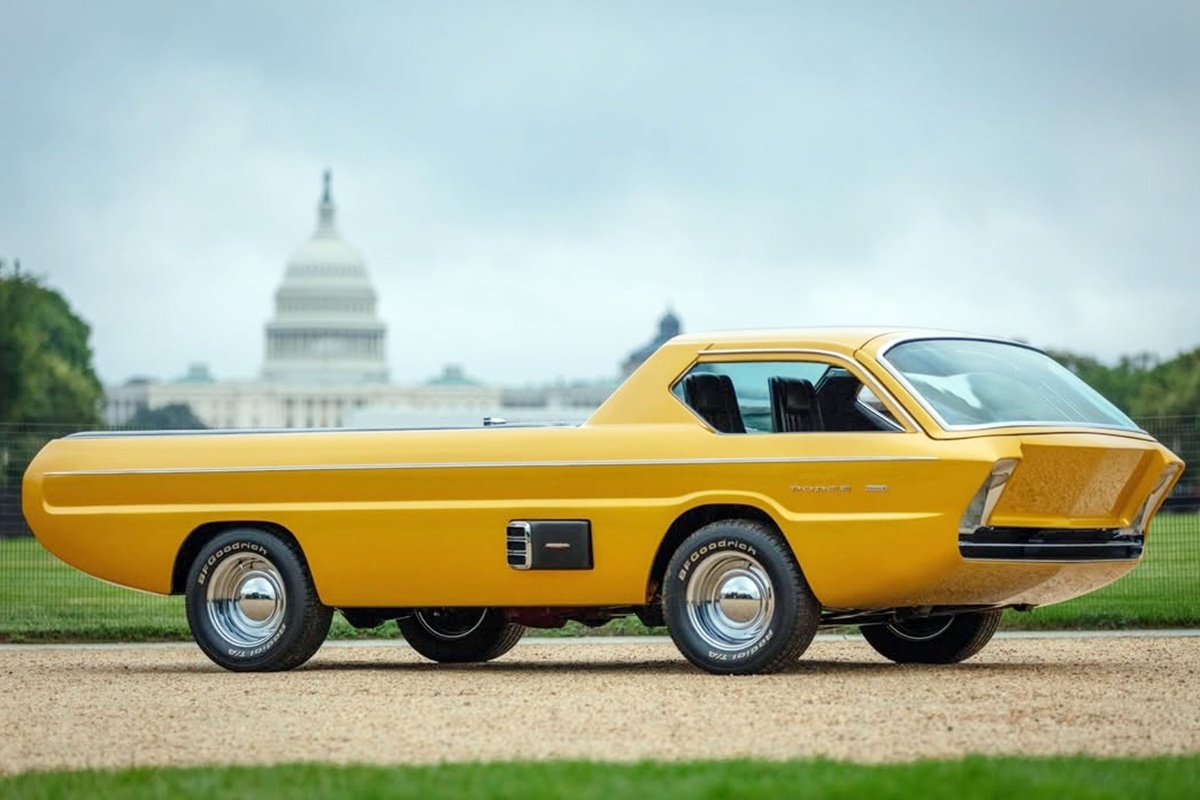
Imagine a pickup truck with front-opening access instead of traditional doors—it might sound unusual, but such a vehicle existed in the 1960s. The Dodge Deora, a custom-built creation based on the Dodge A100, pushed the limits of automotive design. Even today, its bold styling and innovative engineering continue to draw attention.
The Deora was more than just a show car. It was recognized as an official Chrysler concept vehicle, achieved iconic status, and was later featured as a Hot Wheels die-cast toy. The original vehicle still exists and fetched an impressive $320,000 at auction in 2009, highlighting its long-lasting appeal.

Front-Entry Windshield: A Creative but Controversial Feature
The Dodge Deora didn’t use traditional side doors. Instead, the entire front windshield tilted upward while the lower section folded down, allowing passengers to enter from the front. This unusual feature raised safety questions regarding emergency exits during a front-end collision. However, from a design perspective, it showcased the peak of hot rod and custom car creativity in the 1960s.
Designer Harry Bradley and custom car builders Mike and Larry Alexander developed the concept. They completely redesigned the front of the Dodge A100 pickup platform, quickly capturing the attention of automotive enthusiasts.
The overhaul went beyond appearance, involving chassis updates, suspension changes, and moving the engine to a mid-mounted position. The Deora also included an electrically operated windshield, a yoke-style steering wheel, and other features ahead of their time. This innovation helped the Deora win the prestigious Ridler Award at the 1967 Detroit Autorama.

Turning a Dodge A100 into a Showpiece: Customization Highlights
Bradley’s concept began with a stock A100 pickup but evolved into a futuristic design. Notably, the Deora used components from other vehicles, like the front end from a 1960 Ford and taillights inspired by a Ford Thunderbird, an ironic inclusion for a Chrysler-backed build, considering it featured parts from competing brands.
The customization was extensive. The roofline was lowered to 144 cm (57 inches), and the interior layout was redesigned. The dashboard was moved closer to the sides, and Mustang taillight bezels were repurposed as air vents. While the 2.8-liter Slant-6 engine remained stock, the drivetrain was converted from front-wheel to rear-wheel drive, significantly changing its driving characteristics.
Deora’s legacy is significant. It was presented as a Chrysler concept vehicle and toured show venues across the U.S. when Bradley joined Mattel, the Deora became one of the first Hot Wheels models ever made. This helped solidify its reputation as a cultural icon, bridging the gap between automotive design, custom car culture, and toy collectibles.























